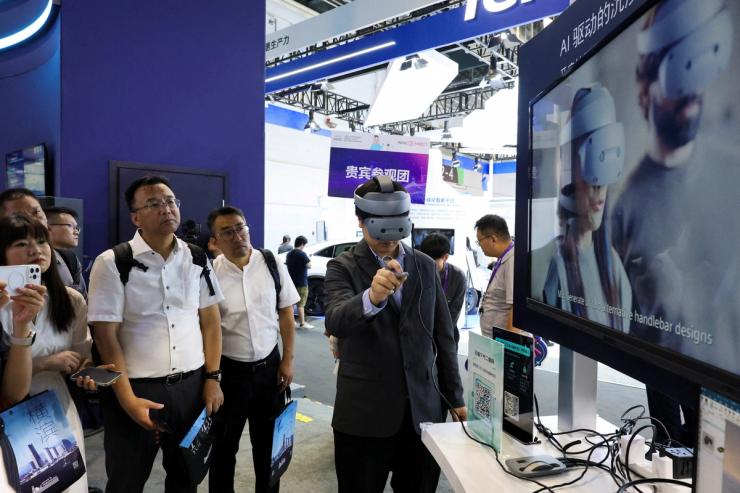Andy’s view
The big idea that animates Dan Wang’s Breakneck: China’s Quest to Engineer the Future is compellingly simple: China is run by engineers who build things, while the US is run by lawyers who stop things being built.
It’s a rich irony that Breakneck is climbing The New York Times bestseller list just as an infrastructure boom of epic proportions gets under way in the US.
The “hyperscalers” of Silicon Valley — Alphabet, Amazon, Meta, and Microsoft — have thrown hundreds of billions of dollars into building an AI-powered future, and investors keep giving them more money to do so. Sam Altman, the CEO of OpenAI, set off the capital spending frenzy by announcing a $500 billion AI infrastructure plan at the White House in January, and nothing is standing in Big Tech’s way; certainly not lawyers or anti-trust regulators.
US President Donald Trump is all in on AI. He’s surrounded himself with tech moguls and investors: Elon Musk hovered next to his Oval Office desk before the two fell out; Musk’s protégés are still all over Washington, trying to dismantle the administrative state, supposedly to make it less “lawyerly” and more efficient.
Already, the AI buildout dwarfs the Apollo program, the original moonshot. There has been no parallel to this in the modern Western world.
In fact, the economist Adam Tooze writes that the only comparison can be found in — wait for it — China.
Wang doesn’t dwell on this in Breakneck, but China is dealing with the ugly aftermath of its own infrastructure boom. The country’s leaders, ostensibly engineers, got their calculations disastrously wrong and built too much of everything, including high-speed rail. The property sector is in a multi-year collapse: By one estimate, China has enough empty apartments to house the entire population of France. Almost all major private real estate firms have imploded.
Even Wang’s claim that engineers run China needs qualification. The sinologist Jonathon P. Sine, who writes the Cogitations Substack, looked into the data and found that whereas in 2002 a stunning 70% of Politburo members were trained engineers, that figure plummeted to 20% in 2007 — before ticking up again to 33% in 2022.
Today, most members of the Chinese elite have a background in management, while the country’s leader, Xi Jinping, has an undergraduate degree in chemical engineering and a postgraduate degree in law — the Marxist version.
China, the engineering state, is burdened by massive debt. A demographic bust is sapping its vitality. Unofficial estimates of youth unemployment run as high as 60%. This year, Xi has been leading a campaign against “involution,” or excessive competition between companies that is destroying profit — another legacy of the high-growth era.
Nobody knows what the payoff from AI will look like. Visionaries in Silicon Valley see the technology creating new industries, curing diseases, and making workers more productive. They’re confident that executives will pay a high price for an algorithm that puts a PhD graduate into their jacket pocket. Trillions of dollars will be spent before we find out. Critics worry a bubble is about to pop.
It may sound surprising to those watching the geopolitical standoff between the US and China, but no two nations are more alike. Wang describes both peoples as “restless, eager for shortcuts, ultimately driving most of the world’s big changes.” They’re also both prone to manic excess.
China placed its big bets on physical infrastructure; the US is instead gambling on bits and bytes. It’s possible they’ll end up in a similar place.
In this article:
Room for Disagreement
Wang, a technology analyst and writer, cites high-speed rail as an example of how the US and China dramatically diverge. In 2008, California voters approved the construction of a link between San Francisco and Los Angeles, while China started work on a Beijing-Shanghai line of a similar distance. Three years later, the Chinese line opened at a cost of $36 billion. So far, California has managed to install a short stretch of track between two towns in the Central Valley, and cost estimates for the project have ballooned to $128 billion.
He is right, of course, about America’s shabby infrastructure. China’s is mostly new and shiny, although before too long it will need to be patched up or replaced. How will Beijing pay for all that?
Notable
- Is AI a bubble? Circular deals are raising alarm, but Nvidia CEO Jensen Huang argues that this looks nothing like the dot-com boom and bust.
- AI investment now accounts for an astonishing 40% of US GDP growth, the economist Ruchir Sharma says.


